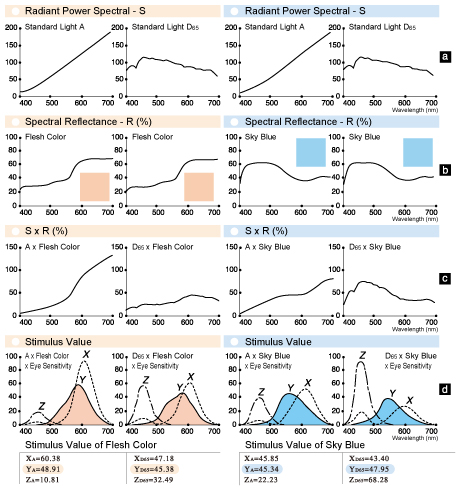When our eyes receive light, they transmit information to the cerebrum by dividing it into three components of red, green, and blue. The cerebrum judges them comprehensively and recognizes the color. For example, the green color of blackboard is expressed numerically as 5.5 of the red-felt component, 7.0 of green-felt component, and 7.2 of blue-felt component, compared with ideal white. This expression method is called CIE color specification method, and is set forth in the international standards. These three components are psychophysical quantities called tri-stimulus values XYZ. In other words, color is expressed by three-dimensional coordinate values of XYZ.
General color measuring instruments measure the reflected light from an object by separating it into its spectral components, measure the spectral reflectance by each wavelength, and calculate and output as tri-stimulus values XYZ by the method set forth in standards.
See the figure in the longitudinal line. The example of the most left column shows that, when flesh color is seen under a lamplight of standard light A, light that comes into eyes shows a spectral distribution as seen in the figure of (A x flesh color). Receiving this light, eyes feel three colors as in the figure. It means that eyes feel the color with the total quantity of stimulus values XYZ. In the figure, the area of colorless part shows the amount of component which is felt green.
The next column shows an example of calculation of tri-stimulus values XYZ when the same flesh color is seen under a lamplight of standard light D65 (north sky daylight).
By this color-measuring calculation, color expressed by light of each wavelength can be specified with three numbers (three-dimensional coordinate).

